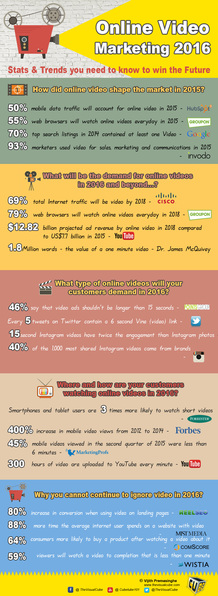 Source: The Visual Cube Source: The Visual Cube If you’ve read anything about content marketing over the past two years, you would’ve noticed that the role and conversion success of video have increased exponentially. A few of the most important statistics:
Producing a video for your business used to be an expensive affair involving numerous experts. These days, with digital developments and changed customer expectations, having a few relatively inexpensive tools can quickly set you on your way to joining the video revolution. In exploring how to create videos that meet the expectations of our clients, and myself, I’ve learned that while the equipment isn’t as expensive anymore, there are still a few tips and tricks to keep in mind. Here’s what I’ve learned so far: PREPARATION When recording a face-to-camera message, make sure the interviewee has received and rehearsed the script well before the interview. Don’t rely on a teleprompter, cue cards or a rushed rehearsal on the day. A teleprompter or cue cards can help them remember the message, but viewers always notice when the message seems unfamiliar to the person delivering it on camera. Reading from a document with only a few glances at the recording equipment is of course a huge no-no. Before you get started, explain the recording process to the interviewee. Warn them against habitual movements or expressions that could be distracting to viewers. Wringing hands, bouncing legs, saying “um” before every answer, or even sniffing, are a few examples. If the interviewee does fall into these habitual traps during the recording, allow them to finish their answer, then remind them of the habit, and redo the question and answer. It might be uncomfortable to point it out, but leaving it in the recording will result in viewers getting distracted, rather than focusing on the core message. The interviewer has to brief spokesperson on how long final clip will be. This will help the interviewer to decide which pieces of information to relay, and which to leave out for the purpose of including the strongest message in the final clip. Recording time will generally be much longer than clip, as the interviewee needs a chance to place information in context, and the interviewer needs to obtain enough information to be able to create a concise but fully representative story. Allow up to 60 minutes recording time for a final clip of 5 minutes. If the interviewee is traveling to the recording space, he/she must add 30-40 minutes to their regular traveling time to allow for contigencies, finding the recording space, freshening up, getting their heart rate and breath back to normal, and having audio set up and tested. RECORDING The interviewer must guide the interviewee to give short, concise sound bytes summarising his/her point(s), rather than long statements including superfluous information. Interviewees tend to focus on formulating the best answer from the vast amount of knowledge they have. Interviewers should ensure that the most pertinent information can be included in short clips that can be used in a variety of video formats specified by the various social media platforms. Have a glass of water available for the interviewee. Being on camera is stressful for most people, and they might experience an unusually dry mouth as a result. Do not rely on overhead fixtures to provide lighting for the recording. Not only will it cast unflattering shadows on the interviewee’s face, but overhead lights rarely provide the amount of light needed for high quality video. If you don't have standalone video lights, find a large window (without blinds, curtains or burglar bars in front of it) and place the interviewee diagonally in front of it. Natural daylight filtered through a window is some of the best lighting for video. In the setup used for TV interviews the camera and interviewee is positioned facing each other, with the interviewer seated to the side of camera. The interviewee doesn't look at the camera, but rather at the interviewer. For more direct messages, facing the camera is absolutely fine, but avoid the “boring talking head” syndrome. Don’t stop and restart the camera after errors. Shoot continuously and edit the recording afterwards. If the interviewing pair needs to redo a bit, just let them pause for a view seconds before starting again; this will give the video editor enough room to edit out the flubs. Record 5 second pauses between questions and answers, rather than having the interviewee answer the moment the question has been asked. During these pauses the interviewee needs to remain absolutely quiet and as still as possible. This will help the video editing process go a lot quicker and smoother. Remind the interviewee to stay calm and speak slowly. Avoid recording distracting background noises by warning everyone in the vicinity of the recording space that you are busy with a recording. Even through a closed door regular day-to-day activities like conversations in a hallway or cupboard doors closing can get picked up by microphones. Typing on a keyboard during an interview can also be picked up by microphones and create sound disturbances in the recording. If you need to take notes, try to do so the old fashioned way … with pen and paper. Switch cellphones to airplane mode to ensure there are no electronic sound disturbances from either ringtones or signals on any wireless audio equipment. Don't allow unnecessary people in the recording space as they might be a visual distraction to the person speaking. If you’re interested in starting to create videos for your business, this blog post by The Visual Cube has an overview of the types of businesses that benefit the most from video marketing, and things to keep in mind when you get started. If you need help with creating a short, sharp message to get your key points across, chat to us to see how we can help.
0 Comments
Leave a Reply. |
Archives
November 2020
Categories
All
|

 RSS Feed
RSS Feed